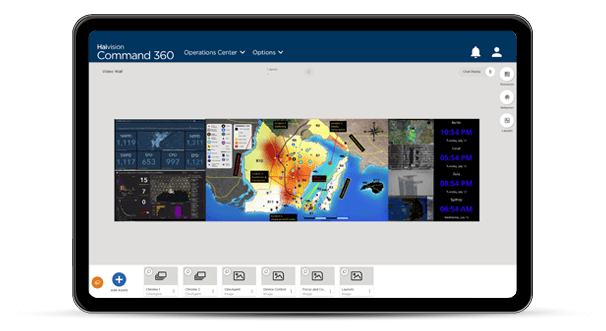Communication planning lies at the heart of every operational management philosophy. Whether addressing internal or external parties, operations at all levels of an organization need a formal protocol for communicating effectively. The most basic communication model dictates the hierarchy through which information flows and how it is addressed. This is especially important during an emergency. Communication during a crisis must be clear, efficient, and effective.
The military is exceptionally adept in this area as every stage of mission preparedness and execution can make the difference in life-or-death scenarios. Not every operation faces such serious outcomes, but every operation should take a page from the military’s adherence to a structured communication protocol. Every facet of operation management evolves with emerging technologies, and so too should communication strategies, by leveraging increasingly sophisticated visual collaboration systems.
In the broadest sense, military, cybersecurity, network, and public safety operations function in two modes: (predictable) planned mission performance, or (unpredictable) crisis response. Like the military, most civilian operations maintain a protocol for communicating with internal and external parties under all circumstances. In contrast to routine communication, incident response requires both a structured, predictable framework as well as the flexibility to quickly extract meaningful information from multiple sources during unpredictable emergencies.
For example, implementing a crisis communication plan may include the following high-level framework:
- Formalize the incident response team activation process
- Designate a point person for external communication
- Create criteria for law enforcement involvement
- Develop communication templates for stakeholder outreach
- Monitor social media
Each point above represents countless sub-tasks required to efficiently react when operations face a threat or crisis event. It is in the granular details, those countless sub-tasks where the creativity, agility, and flexibility of human judgment make the difference between an effective response versus a merely efficient response.
Comprehensive Collaboration Technology
When the right tools are available, physically present and virtual teams can use enhanced visual collaboration to analyze, strategize, and communicate real-time information. The command-and-control rooms in operations centers already leverage the power of video wall systems to display key intelligence assets: IP camera streams, social media, maps, satellite feed, cable news, field audio, and more. Local applications for monitoring field personnel, sensors, alarms, and other emergency management devices can be displayed simultaneously. Video walls enable leadership teams to view the latest, most accurate, and meaningful information as a crisis develops to make proactive decisions and mitigate losses.
Haivision’s CineNet Visual Collaboration Platform takes the video wall display to the next level, by allowing operators to dynamically control the appearance of information assets. In addition to high-performance video processing hardware, the platform provides an intuitive user interface, centralized device management, and tools for instant content customization. All of this contributes to faster sharing of critical information, opening the door for decisive collaboration. With CineNet, operators can manipulate and highlight content, or discrete assets, in several ways:
- Drag-and-drop visual assets with ease
- Crop, layer, rotate, and resize content with results displayed instantaneously at the control point and on the video wall
- Create and save layouts to quickly review alternating collections of assets, organized to address different audiences or use cases
- Configure displays to repetitively loop content or retrieve layouts in response to various triggers
- Annotate for emphasis with colorful borders, text, or drawings in real-time to initiate or capture key discussion points or actionable data
Humans are naturally visual creatures. Videos, graphics, charts, images, and maps – when thoughtfully presented – communicate information so much more quickly than lengthy status reports and tables full of statistics. While there’s a time and place for exhaustive reports with dense data, it’s not during the height of incident response. Decision makers need a predictable plan which accommodates creativity and flexibility in communicating important information. The right visual collaboration platform delivers both and serves the organization well during routine or crisis conditions.
Contact us for a demo of the CineNet Visual Collaboration Platform. See how dynamic content management tools support your crisis communication objectives.
